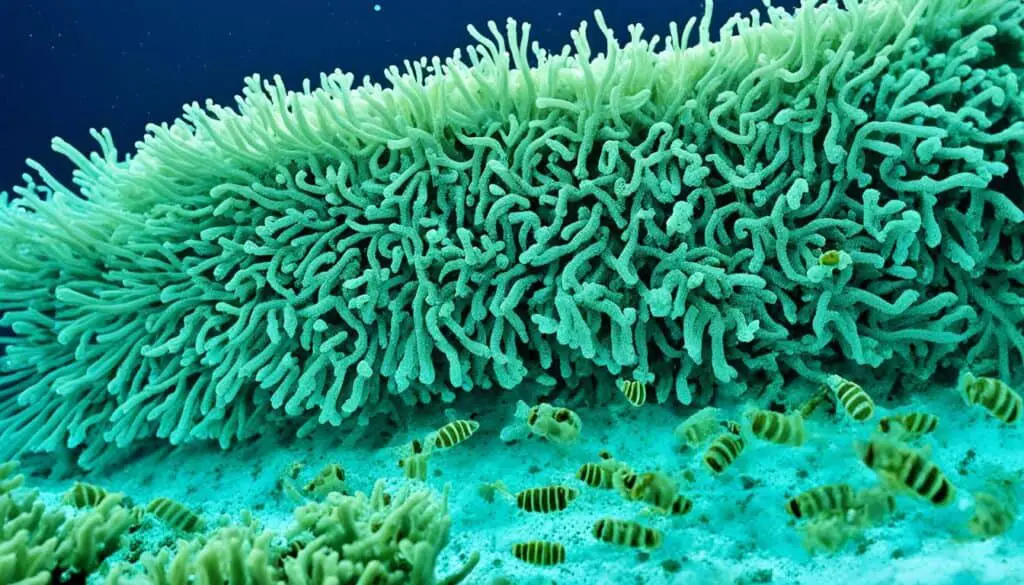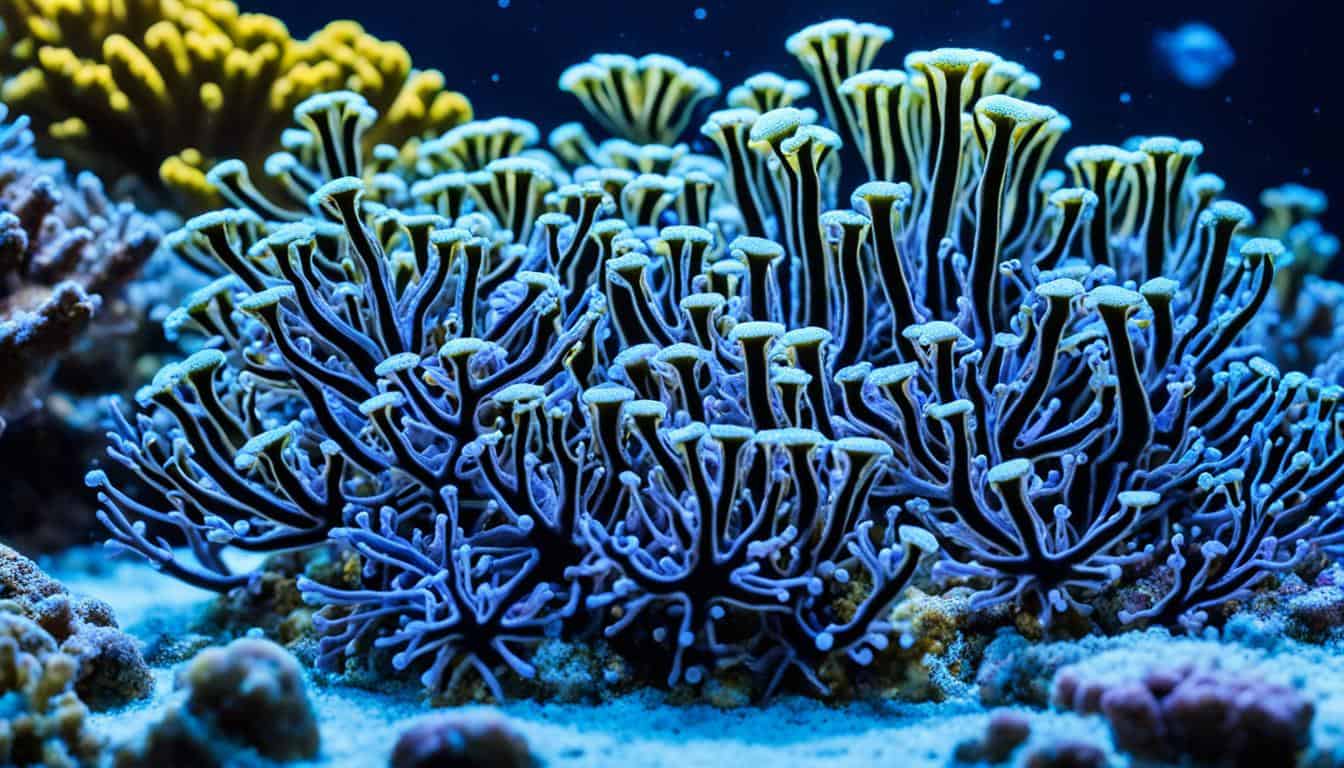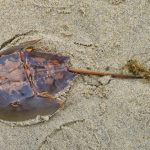Corals have amazing ways to reproduce that help them survive and keep marine ecosystems healthy. They use two main ways to reproduce: asexual and sexual. Asexual reproduction happens when new polyps grow from old ones, helping the colony grow fast. Sexual reproduction, on the other hand, involves making male and female gametes, leading to coral spawning.
Learning about coral reproduction shows us how important they are for nature. These methods help corals form colonies that can handle changes in their environment. This keeps reef systems stable. The result of these processes is the creation of coral larvae, which are key to keeping coral populations going.
Understanding Coral Reproduction
Coral reproduction is key to the health of marine ecosystems. It happens through two main ways: asexual and sexual reproduction. Asexual reproduction lets corals grow fast by cloning themselves. This keeps the colony strong and healthy against threats.
Sexual reproduction is different. It involves making gametes that come together to form new corals. These new corals help keep the coral population going. Knowing about these methods shows how corals adapt and survive in the sea.
Learning about asexual and sexual reproduction shows how complex coral life is. Healthy corals are crucial for reefs, helping many sea creatures and keeping nature diverse. We must protect these vital resources with good management to keep them safe.
Methods of Coral Reproduction
Corals have two main ways to reproduce: asexual and sexual. Each method is vital for the survival and growth of coral species in the ocean.
Asexual Reproduction in Corals
Asexual reproduction in corals includes budding and fragmentation. Budding means new polyps grow from the parent coral, making the colony bigger. Fragmentation happens when a coral piece breaks off and starts a new colony. Both ways make new corals that are just like the parent.
This helps coral populations grow fast, especially in places where conditions stay the same.
Sexual Reproduction in Corals
Sexual reproduction is different. It involves releasing gametes, which can create diverse offspring. This usually happens when many corals release their gametes at the same time. This increases the chance of fertilization.
The new larvae can settle and start new colonies. This helps coral reefs stay strong and healthy.
How do corals reproduce?
Coral reproduction is a complex process involving many factors. It’s important to understand how these factors work together. This helps us see how corals thrive.
Coral Spawning Events
Many corals release gametes at the same time in synchronized events. These events happen on specific nights, often tied to the moon’s phases. This timing helps ensure that male and female corals can fertilize each other. These coral spawning events are key for keeping coral populations diverse.
Environmental Cues for Spawning
Corals use several environmental cues for spawning to start their reproduction. Important factors include:
- Water temperature: Corals spawn when the water gets to a certain temperature, signaling it’s time to reproduce.
- Lunar cycles: The moon’s phases are crucial, with many species spawning around the full moon.
- Light levels: Changes in light help corals know when it’s time to reproduce.
The Life Cycle of Coral
The journey of coral from single cells to thriving colonies is fascinating. It shows how marine life is complex. The environment affects the life cycle of coral, which is key to coral reefs’ health. Knowing this cycle helps us see how important these ecosystems are and why we must protect them.
From Gamete to Larvae
After fertilization, coral gametes turn into coral larvae, or planulae. These tiny beings start a critical phase. They swim towards the ocean’s surface, becoming part of the plankton. The planulae move towards light, using it for energy and nutrients.
Planulae Behavior and Settlement
The way planulae behave is crucial for coral survival. Soon, they start settling, looking for the right place to attach. Things like water temperature, salinity, and substrate availability affect this. Once they find a good spot, they change into polyps and settle down. This marks the start of a new coral colony, key for the reef’s future health.

The Role of Coral Polyps in Reproduction
Coral polyps are key players in the complex world of coral ecosystems. They are the building blocks of coral colonies. These small, soft creatures make the strong calcium carbonate skeletons that create vibrant coral reefs. Their role in coral polyps reproduction is vital. Both sexual and asexual reproduction helps keep and grow these colonies.
The asexual method lets polyps copy themselves, making their structures bigger and more dense. This leads to fast coral growth in good conditions. On the other hand, sexual reproduction happens during special events. It produces gametes that can turn into new polyps, helping coral colonies stay strong.
Learning about coral polyps and their reproduction deepens your understanding of reef ecosystems. Polyps are crucial for the structure and health of coral reefs. They also help with marine biodiversity, supporting many species that live in these areas.
| Reproductive Method | Process | Outcome |
|---|---|---|
| Asexual Reproduction | Cloning | Expanded coral colonies |
| Sexual Reproduction | Spawning of gametes | New coral polyps |
Coral Reproduction Cycle
The coral reproduction cycle has many important stages. It’s key to know these stages to protect coral ecosystems. It starts with making sperm and eggs, then moves to spawning based on environmental signs. After that, sperm and eggs meet, fertilize, and create larvae.
Stages of Coral Reproduction
After fertilization, the larvae go through changes before settling and starting new colonies. These stages are crucial for coral species and reef health. Each phase, from gametes to planulae, needs certain conditions and reacts to the environment in specific ways. This shows how delicate the reproduction process is.
Importance of Coral Health in Reproduction
Knowing about coral health is key to the coral reproduction cycle’s success. Healthy corals can reproduce well, which helps biodiversity and marine ecosystem stability. Things like water quality, temperature, and nutrients affect coral health and reproduction. Keeping these environments safe helps corals grow, showing their importance in marine life.
FAQ
How do corals reproduce?
Corals have two main ways to reproduce: asexual and sexual methods. Asexual reproduction happens through budding or breaking off pieces. Sexual reproduction involves making gametes, which then combine to form larvae called planulae.
What are coral spawning events?
Coral spawning events are when corals release their gametes all at once on certain nights. This is key for successful fertilization between male and female gametes.
What stages are involved in the coral reproduction cycle?
The coral reproduction cycle has several steps: making sperm and eggs, spawning, fertilization, larval development, and settlement. Each step is vital for coral survival and reef health.
What is the significance of planulae in coral reproduction?
Planulae are larvae that come from fertilized coral gametes. They are important for spreading coral populations over long distances. They settle on suitable places to start new colonies.
How do coral polyps contribute to reproduction?
Coral polyps are the basic units that make up coral reefs and can reproduce both sexually and asexually. They help grow and expand coral colonies, which is crucial for reef health.
What environmental cues trigger coral spawning?
Environmental factors like temperature, moon phases, and water conditions trigger coral spawning. These cues help corals spawn at the same time, boosting fertilization chances.
How does coral reproduction impact marine biodiversity?
Coral reproduction is key for marine life diversity. It keeps coral populations healthy, helps them adapt, and supports the complex ecosystems in coral reefs.







